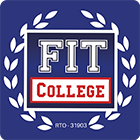
How do I become a instructional designer?
Certificate IV in Training and Assessment
- Evidence of relevant skills, knowledge and employment experience


Diploma of Training Design and Development
- There are no mandated entry requirements.








Graduate Certificate in Health Professional Education
- There are no mandated entry requirements.




Graduate Diploma of Health Professional Education
- There are no mandated entry requirements.


Graduate Diploma in Education Studies
- There are no mandated entry requirements.





Diploma of Vocational Education and Training (Design and Development)
- There are no mandated entry requirements.
 SG Learning and Development
SG Learning and Development
Related occupations
Trainer and Assessor
A Trainer and Assessor develops and delivers training programs, identifies training needs, prepares materials, and adapts to various learning styles.
E-learning Developer
An E-learning Developer creates and implements online learning experiences, collaborating with experts, managing projects, and ensuring effective content delivery.
Learning Designer
A Learning Designer creates training programs and materials for organisations, meeting diverse learner needs, coordinating projects, and ensuring effective communication and multitasking.
Education Program Developer
An Education Program Developer designs training materials for various learning environments, requiring strong communication and organisational skills.
Learning and Development Manager
A Learning and Development Manager designs training programs, identifies needs, develops resources, and liaises with diverse stakeholders to enhance skills.
Vocational Education Trainer
A Vocational Education Trainer instructs students at training organisations, tailoring programs to industry needs and fostering effective communication skills.
TAFE Teacher
TAFE Teachers provide vocational training, develop learning materials, and support diverse learners while managing multiple students effectively.
Learning Consultant
A Learning Consultant advises on educational programs, prepares materials, guides course choices, and supports diverse training needs in a team setting.
Assessor
An Assessor evaluates student learning through exams, assignments, and practical observations in vocational education, ensuring proper procedures.
Recruitment Manager
Recruitment Managers oversee hiring to attract top talent, collaborating with departments and candidates to meet staffing goals through strategic recruitment.
Curriculum Developer
A Curriculum Developer designs and updates educational programs, creating effective learning materials that meet educational standards.
Adult Educator
An Adult Educator designs and delivers courses for adults to enhance skills, assessing progress and adapting methods for effective learning.
Common questions
How much does an Instructional Designer earn?
In Australia, a full time Instructional Designer generally earns $2,173 per week ($112,996 annual salary) before tax. This is a median figure for full-time employees and should be considered a guide only. As you gain more experience you can expect a potentially higher salary than people who are new to the industry.
What are the job opportunities for an Instructional Designer?
This industry has seen a decrease in employment numbers over the last five years. There are currently 20,700 people working in this field in Australia and many of them specialise as an Instructional Designer. Instructional Designers may find work across all regions of Australia, particularly in larger towns and cities.
Source: Australian Government Labour Market Insights
How do I become an Instructional Designer?
If you’re interested in a career as an Instructional Designer, a Diploma of Training Design and Development is an ideal qualification. This course will show you how to design and develop a range of learning resources and assessment tools. You could also consider a Graduate Diploma of Adult Language, Literacy and Numeracy Practice, a Certificate IV in Training and Assessment or a Diploma of Vocational Education and Training.
Further reading


Most popular design courses
30th May 2022)

